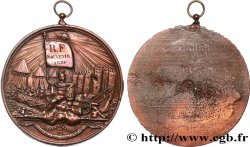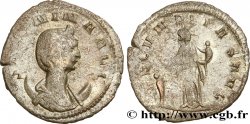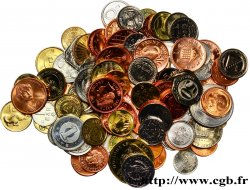Quantity
Add to your cart

Type : Médaille, Pont Alexandre III
Date: 1900
Mint name / Town : 75 - Paris
Metal : silver plated bronze
Diameter : 70 mm
Orientation dies : 12 h.
Engraver DUPUIS Daniel (1849-1899)
Weight : 143,36 g.
Edge : lisse + corne BRONZE
Puncheon : corne BRONZE
Coments on the condition:
Patine grise hétérogène, des marques d’usure sur les reliefs. Présence de coups et rayures
Obverse
Obverse legend : ALEXANDRE III / PAX // SVR LA BERGE HISTORIQVE AVANT QVE DE DESCENDRE / SI TON GENEREVX CŒVR AVX CŒURS FRANÇAIS REPOND, / MÉDITE GRAVEMENT, RÊVE DEVANT CE PONT, / LA FRANCE LE CONSACRE A TON PÈRE ALEXANDRE.
Obverse description : Sous une allégorie montrant le buste rayonnant d'Alexandre III, la France et la Russie, personnifiées, en train de poser la première pierre du pont consacré à Alexandre III à Paris ; signature DANIEL-DUPUIS ; à l'exergue inscription en quatre lignes .
R/ et dessous .
Reverse
Reverse legend : SA MAJESTE NICOLAS II / EMPEREUR DE TOUTES LES RUSSIES / SA MAJESTE L'IMPERATRICE ALEXANDRA FEDOROVNA / FELIX FAURE PRESIDENT DE LA REPUBLIQUE FRANÇAISE / ONT POSÉ A PARIS / LA PREMIERE PIERRE DU PONT / ALEXANDRE III, ETC. .
Reverse description : Allégorie de la Seine avec un ange tenant une banderole inscrite LE VII OCTOBRE MDCCCXCVI .
Commentary
Les travaux de construction du pont Alexandre III ont débuté en 1896, avant d'être inauguré par le président Félix Faure et le tsar Nicolas II à l'occasion de la venue de ce dernier pour l'Exposition Universelle de Paris en 1900. Le quatrain reproduit au droit est tiré du poème Salut à l'Empereur, de José Maria de Heredia.
Inauguré pour l'Exposition universelle de Paris en 1900, le pont était destiné à symboliser l'amitié franco-russe, instaurée par la signature de l'alliance conclue en 1891 entre l’empereur Alexandre III (1845-1894) et le président de la République française Sadi Carnot. La première pierre fut posée par le tsar Nicolas II de Russie, l'impératrice Alexandra Fedorovna et le président Félix Faure le 7 octobre 1896. La construction de cet ouvrage d'art fut confiée aux ingénieurs Jean Résal et Amédée Alby, ainsi qu'aux architectes Cassien-Bernard et Gaston Cousin.
Construit dans l'axe de l'esplanade des Invalides, il conduit de celle-ci aux Petit et Grand Palais également construits pour l'exposition universelle.
Sur la colonne, rive droite en aval, fut gravée cette inscription : « Le 14 avril 1900, Émile Loubet président de la République Française a ouvert l'exposition universelle et inauguré le pont Alexandre III ».
Construction work on the Alexandre III Bridge began in 1896, before being inaugurated by President Félix Faure and Tsar Nicholas II on the occasion of the latter's visit to the Universal Exhibition in Paris in 1900.. The quatrain reproduced on the right is taken from the poem Salut à l'Empereur, by José Maria de Heredia.
Inaugurated for the Universal Exhibition in Paris in 1900, the bridge was intended to symbolize Franco-Russian friendship, established by the signing of the alliance concluded in 1891 between Emperor Alexander III (1845-1894) and the President of the French Republic Sadi Carnot.. The first stone was laid by Tsar Nicholas II of Russia, Empress Alexandra Feodorovna and President Félix Faure on October 7, 1896.. The construction of this work of art was entrusted to the engineers Jean Résal and Amédée Alby, as well as to the architects Cassien-Bernard and Gaston Cousin.
Built along the axis of the Esplanade des Invalides, it leads from there to the Petit and Grand Palais, also built for the Universal Exhibition..
On the column, on the right bank downstream, was engraved this inscription: \\\"On April 14, 1900, Émile Loubet, President of the French Republic, opened the Universal Exhibition and inaugurated the Alexandre III Bridge.\\\"
Inauguré pour l'Exposition universelle de Paris en 1900, le pont était destiné à symboliser l'amitié franco-russe, instaurée par la signature de l'alliance conclue en 1891 entre l’empereur Alexandre III (1845-1894) et le président de la République française Sadi Carnot. La première pierre fut posée par le tsar Nicolas II de Russie, l'impératrice Alexandra Fedorovna et le président Félix Faure le 7 octobre 1896. La construction de cet ouvrage d'art fut confiée aux ingénieurs Jean Résal et Amédée Alby, ainsi qu'aux architectes Cassien-Bernard et Gaston Cousin.
Construit dans l'axe de l'esplanade des Invalides, il conduit de celle-ci aux Petit et Grand Palais également construits pour l'exposition universelle.
Sur la colonne, rive droite en aval, fut gravée cette inscription : « Le 14 avril 1900, Émile Loubet président de la République Française a ouvert l'exposition universelle et inauguré le pont Alexandre III ».
Construction work on the Alexandre III Bridge began in 1896, before being inaugurated by President Félix Faure and Tsar Nicholas II on the occasion of the latter's visit to the Universal Exhibition in Paris in 1900.. The quatrain reproduced on the right is taken from the poem Salut à l'Empereur, by José Maria de Heredia.
Inaugurated for the Universal Exhibition in Paris in 1900, the bridge was intended to symbolize Franco-Russian friendship, established by the signing of the alliance concluded in 1891 between Emperor Alexander III (1845-1894) and the President of the French Republic Sadi Carnot.. The first stone was laid by Tsar Nicholas II of Russia, Empress Alexandra Feodorovna and President Félix Faure on October 7, 1896.. The construction of this work of art was entrusted to the engineers Jean Résal and Amédée Alby, as well as to the architects Cassien-Bernard and Gaston Cousin.
Built along the axis of the Esplanade des Invalides, it leads from there to the Petit and Grand Palais, also built for the Universal Exhibition..
On the column, on the right bank downstream, was engraved this inscription: \\\"On April 14, 1900, Émile Loubet, President of the French Republic, opened the Universal Exhibition and inaugurated the Alexandre III Bridge.\\\"








 Report a mistake
Report a mistake Print the page
Print the page Share my selection
Share my selection Ask a question
Ask a question Consign / sell
Consign / sell
 Full data
Full data















